The Mummers 'Tale To Tell'
Posted April 22nd, 2010 by kevster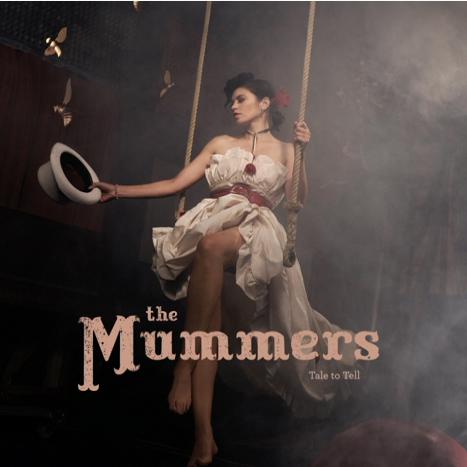
The Mummers drift out of your speakers with a debut which is both exciting and new, but such is its joy that it happily convinces the past to skip along with it.
It is clear that this is not going to be an album to stick to the obvious. The track 'Wonderland' storms out of the blocks with a sound best described as early Goldfrapp taking a ride on a carousel with a Danny Elfman orchestra in tow. When the vocals drift in, they again add another layer to the piece, an enchanting almost naive little voice which adds to the fairy-tale-like ambience of the record itself.
The lead single, 'March of the Dawn', is the perfect opening statement for the band. The track is all at once triumphant, bombastic, fragile, eccentric, and really, truly, lovely. It's happy enough to suggest a summery track, but at the same time it also has a magical winter vibe, conjuring the images of colourful and hazy Christmases past.
The cover depicts the lead singer in the woods, and the record does achieve the sense of the magical outdoors from fairy tales and 60s folk music. The album is whimsical to an extent, but it never pushes too far in to any sense of unbelievability. In fact 'Tale To Tell' suggests that this is only the first step in to the forest of the Mummers, with no need to leave a trail of sweets behind.
Bonobo 'Black Sands'
Posted April 21st, 2010 by kevster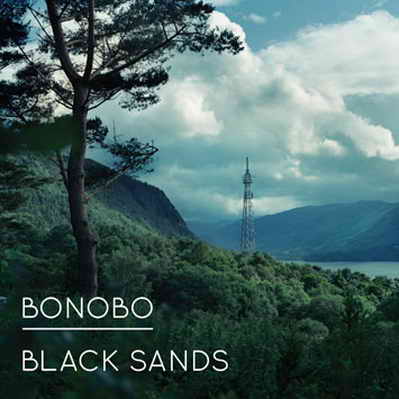
Laid-back London groove maestro Simon Green (alias Bonobo) returns after a considerable absence (on the recording front, at least) with this fourth full-length helping of his masterfully mellow monkey magic.
Green's clearly been keeping his ear to the ground for a bit of rhythmic reinvigoration: the immediately striking "Kiara" reworks the hauntingly elegant string refrain that opens the album with submerged vocal splices and a halting, head-nodding left-field hip-hop beat.
Elsewhere, "We Could Forever" is a funky Afro-Latin workout riding an infectiously crisp guitar riff, and the scruffy, swing-inflected breakbeats that dominated Bonobo's earlier output crop up again on "Kong" (featured here) and "El Toro." But while the grooves here serve quite nicely (and keep things consistently varied), it's the lush layers of unmistakably live instrumentation laid on top -- most of it played by Green himself -- that make the album really soar.
For a style of electronica (chillout/downtempo) that's grown decidedly dusty over the past decade, 'Black Sands' is a welcome infusion of life and warmth.
Big Audio Dynamite 'This is Big Audio Dynamite'
Posted April 21st, 2010 by kevster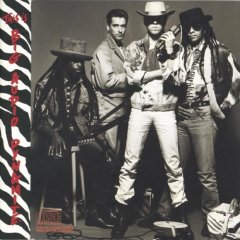
Elbowed out of the Clash, Mick Jones responded forcefully with Big Audio Dynamite, a modernist audio-terrorist outfit whose 1985 debut, 'This Is Big Audio Dynamite', seemed all the more futuristic when compared to Joe Strummer’s reductionist retro rejiggering of the Clash on 'Cut the Crap'.
As is often the case, what was once forward-looking seems inextricably tied to its time in retrospect and the clanking electro rhythms, Sergio Leone samples, chicken-scratch guitars, bleating synths, and six-minute songs of This Is Big Audio Dynamite evoke 1985 in a way few other records do.
Nevertheless, BAD’s boldness remains impressive, even visionary, pointing toward the cut-n-paste masterpieces of the late ‘80s and early ‘90s, and since Jones did not abandon his innate gift for hooks -- if anything, he found ways to create rhythmic hooks as well as melodic ones -- it’s quite accessible for an album that is, at its core, avant-rock.
UB40 'Signing Off'
Posted April 21st, 2010 by kevster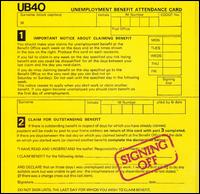
So ubiquitous is UB40's grip on the pop-reggae market today, that it will be difficult for younger fans to comprehend just how their arrival shook up the British musical scene.
Their rhythms may have been reggae based, their music Jamaican inspired, but UB40 had such an original take on the genre that all comparisons were moot.
The moody roots fired "Tyler," which kicks off the set, is a potent condemnation of the US judicial system, while it's stellar dub "25%" appears later in the set. The smoky Far Eastern flavored "Burden" explores the dual tugs of national pride and shame over Britain's oppressive past (and present). If that was a thoughtful number, "Little by Little" was a blatant call for class warfare. Of course, Ali Campbell never raised his voice, he didn't need to, his words were his sword, and the creamier and sweeter his delivery, the deeper they cut.
From deep dubs shot through with jazzy sax, to the bright and breezy instrumental "12 Bar" with its splendid loose groove, that is transmuted later in the set to the jazzier and smokier "Adella," "Food" slams into the dance clubs, "King" (featured here) floats to the heavens.
A timeless masterpiece.
Fela Kuti 'Fela's London Scene'
Posted April 20th, 2010 by kevster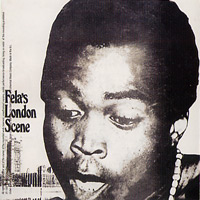
In 1971, Fela Anikulapo Kuti's record company (EMI) agreed to finance a recording date in London for Fela and his band. Now huge stars in Nigeria, this trip was, in a way, a triumphant return to the country that had provided Fela with a musical education and the club scene where he cut his proverbial bandleader's teeth.
What is important to note is that he had become good friends with former Cream (and at the time of this recording current Blind Faith) drummer Ginger Baker, who had traveled to Lagos a year earlier to meet, hang out, and play with Fela. Baker shows up on this recording (albeit uncredited) on the track "Egbe Mio," but more importantly helped get Fela gigs all over the city at such venerable venues as the 100 Club, the Cue Club, and the Four Aces.
Recording at Abbey Road, Fela cut these five awesome tracks in which his Afrobeat sound is more complex and jazzy than on the '69 Los Angeles Sessions. At over 7 minutes "J'ehin J'ehin" cuts a wicked groove for its entire length pushed by the horn section and Tony Allen's superlative drumming. "Buy Africa" is a anti-colonial rant worthy of the Last Poets, and "Fight to Finish" very simply kicks out the jams.
A stunning record that marks the beginning of Fela's best period of recording.
The Bird and The Bee 'Interpreting The Masters, Vol. 1: A Tribute To Daryl Hall & John Oates'
Posted April 20th, 2010 by kevsterChildren of the ‘80s that they are, singer Inara George and producer Greg Kurstin have chosen Daryl Hall & John Oates for the first volume of Interpreting the Masters, a sly move that reveals both their age and intended audience -- i.e., ex alt-rockers raised on new wave and now settling into a tasteful, hipster middle age, hauling around kids dressed in Ramones t-shirts -- and a reflection of Hall & Oates’ increasing reputation as soul-pop songwriters and record-makers.
The Bird & the Bee manage to make these very familiar hits sound fresh without radically reinventing them. That in itself is a much trickier move than turning these all into slow acoustic dirges, but it’s better still because these arrangements are true to both Hall & Oates and George & Kurstin.
The heart of the album lies in these covers of ‘80s staples: they shift the spotlight just enough to prove how good both the original song and singles are, and by never drawing attention to their own performance and arrangements, the Bird & the Bee prove just how good they are too.
Giorgio Moroder 'E=mc2
Posted April 20th, 2010 by kevsterEven though Moroder (who, like Kraftwerk's members, is German) didn't invent electronic dance music single-handedly, he was among the first people to recognize its possibilities. In 1979, Moroder showed us some of those possibilities on E=MC2, a programmed, entirely electronic recording he produced with Harold Faltermeyer. As the album cover states with pride "First Electronic Live-to-Digital Album".
"In My Wildest Dreams," "I Wanna Rock You," (featured here) and "What a Night" are average disco tunes -- it's the computerized digital production that made them so fresh-sounding and risk-taking for their time.
To fully appreciate how forward-thinking this album was, you have to remember that in 1979 R&B and dance-pop hadn't gone completely high-tech and were still relying on a lot of studio musicians. This is the electronic dance music that preceded the rise of techno, house, and industrial noise, and it came at a time when hip-hop was in its infancy and the rave subculture had yet to be invented.
Nice 'tache Giorgio...
David Byrne & Fatboy Slim 'Here Lies Love'
Posted April 1st, 2010 by kevster
Looking for an album devoted to Imelda Marcos, the former first lady of the Philippines ?? You've come to the right place.
With a lineup of guests including Florence & the Machine's Florence Welch, Tori Amos, Steve Earle and Santigold, the 22-track tribute features a diverse mix of thoughtful ballads and disco-influenced dance numbers.
“Here Lies Love” begins with an opening disco number with Imelda at a disco in the late 1970s, where she spent time with all the “beautiful people—Christina Ford, George Hamilton and Henry Kissinger. “Here Lies Love” is what she was quoted as wanting inscribed on her tombstone.
The disco opera ends with Imelda and her maid contemplating the sacrifices they have made. As the Marcoses are airlifted out of the country during the People Power Revolution, Imelda says she doesn’t understand why the people don’t love her anymore, and she looks forward to her vindication and a triumphant return.
Cyndi Lauper's giddy vocals on "Eleven Days" and Róisín Murphy's horn-driven "Dont' You Agree?" offer the most lasting thrills on the album.
And winning duets include Candie Payne and St. Vincent on the breezy "Every Drop of Rain" and Byrne's emotional collaboration with My Brightest Diamond's Shara Worden on "Seven Years."
At times, "Here Lies Love" wobbles as a concept album, and listeners unfamiliar with Marcos' story may not initially understand the lyrical conceits. But it contains enough solid material to justify repeated listens.
Johnny Cash 'Reads the Complete New Testament'
Posted April 1st, 2010 by kevster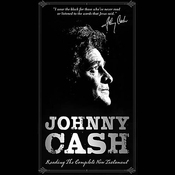
As I'm in a Johnny Cash mood today, here is a rare treat; The Man in Black reading a powerful, yet tremendously tender rendition of the New Testament.
Cash reads the Book with devout humility, with no embellishment. He speaks clearly and plainly, with the odd trace of his Arkansas accent giving the whole a rich, comfortable feeling (with the odd pronunciation of "Pontius" and the very Southern "nekkid"), which draws the listener in, as though we're right there with him, perhaps sitting in a warm cabin on a winter night listening gathered around the rocking chair while being read to.
It's difficult not to be moved by these words being read by a man of simple, basic faith. How one interprets them is purely personal, as it should be.
As you may have guessed, the featured work is from the book of Matthew, detailing the resurrection.
Happy Easter to you all.
Johnny Cash 'American VI: Ain't No Grave'
Posted April 1st, 2010 by kevster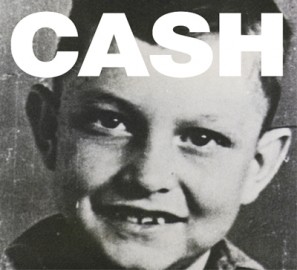
Released for the occasion of Johnny Cash's 78th birthday, American VI: Ain't No Grave is the final installment in the collaboration between Cash and Rick Rubin that began with 1994’s American Recordings.
These ten songs were cut during the same sessions for American V: A Hundred Highways. June Carter Cash (Johnny's wife) died during routine surgery during these sessions. Cash, though grief stricken and with full knowledge that he too was dying due to complications from Parkinson’s disease, worked as often as his health would allow. He died three months after these songs were recorded.
Ain't No Grave is an elegiac and deeply spiritual album, a formal goodbye without regret from a man and an artist of almost mythic stature. The album’s final cut is Queen Liliuokalani's traditional Hawaiian ballad “Aloha Oe,” one of the sweetest, most affectionate leaving songs ever written. And Cash’s version? It’s devastatingly beautiful; to the point of tears.
The featured track is a country-gospel-blues by Brother Claude Ely -- it’s a fierce showdown with the Reaper, with the singer winning it hands down.
If there were any justice, Ain't No Grave would be the last album released under Cash’s name.
 Under The Influence
Under The Influence